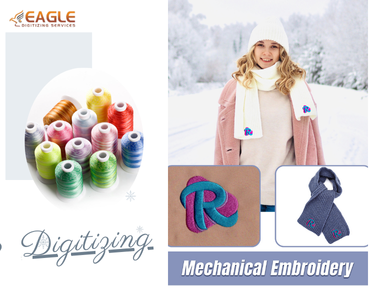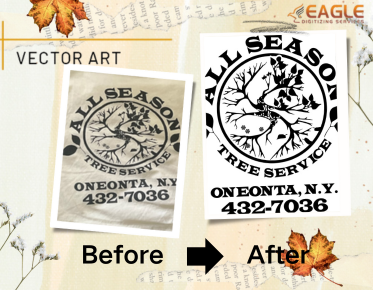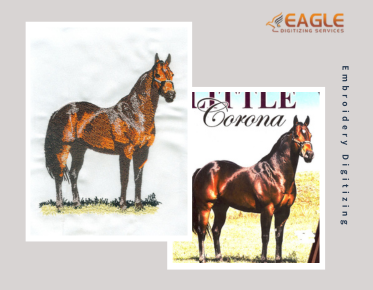How to Prevent Puckering in Machine EmbroideryHow to Prevent Puckering in Machine Embroidery
Understanding Puckering: What It Is and Why It Happens
Embroidery is an art form that brings fabric and thread
together in a beautiful dance of design and texture. But sometimes, that
seamless connection can be interrupted by an unwelcome guest—puckering. This
pesky problem occurs when the fabric pulls or bunches up around the stitches,
ruining an otherwise flawless design. Understanding why this happens and how to
prevent it is key to achieving smooth, professional-looking embroidery.
How
Fabric Tension Impacts Your Stitches
Fabric tension is one of the most crucial aspects to control when
working with machine embroidery. When the fabric is pulled too tight, it can
become overly stretched, causing the embroidery stitches to sink into the
material or create tension that leads to puckering. The key is finding the
perfect balance where the fabric stays taut enough to hold the stitches evenly
but doesn’t lose its natural give. If the fabric is too loose, on the other
hand, the stitches may become too loose, causing them to loop and distort.
Keeping the fabric taut but not overstretched is essential to achieving clean,
even stitches that don’t result in puckering.
The
Role of Needle Size and Type in Puckering
Choosing the right needle for your embroidery project is more than
just about size—it’s about the material and type of needle that will work best
with your chosen fabric. For thicker fabrics, such as canvas or denim, a larger
needle, like a 90/14 or 100/16, is needed to push through the material without
causing too much pressure. For delicate fabrics, such as silk or tulle, a
smaller, sharper needle like a 70/10 or 75/11 is ideal. The wrong needle size
can disrupt the fabric’s tension, causing it to stretch unevenly or tighten in
unwanted ways, leading to puckering. Moreover, needle types like ballpoint
needles, which have rounded tips, are perfect for knits and stretchy fabrics,
as they prevent damage while allowing stitches to lay smoothly.
Which Fabrics Are Most Prone to Puckering?
Lightweight, thin, or delicate fabrics such as chiffon, silk, and
lightweight cotton are more prone to puckering because they lack the structural
integrity to hold up to the pressure of embroiderystitches. These fabrics may stretch or shift out of place as the needle
works, resulting in uneven, puckered designs. Additionally, fabrics with a
loose weave, like linen, are also susceptible to puckering. Their open weave
can cause the fabric to stretch too much, leading to distortion in the design.
Best
Fabric Choices for Smooth Embroidery
On the other hand, heavier, more stable fabrics like denim, canvas,
and medium-weight cotton are much better suited for embroidery. These fabrics
have enough body to hold the stitches without stretching or distorting. When
selecting a fabric for machine embroidery, aim for one that has a smooth, even
texture. Fabrics like cotton broadcloth, twill, and polyester blends are great
choices for beginners and professionals alike because they strike a good
balance between ease of stitching and maintaining shape.
Why
Stabilizers Are Your Best Friend in Embroidery
Stabilizers act as a support system, preventing the fabric from
moving, stretching, or distorting as the needle penetrates. They come in
different types—tear-away, cut-away, and wash-away—each suited for different
projects. Tear-away stabilizers are ideal for designs on sturdy fabrics, while
cut-away stabilizers provide extra support for stretchy or lightweight fabrics.
Wash-away stabilizers are best used for delicate fabrics or projects that
require a clean finish without visible stabilizer remnants.
Choosing
the Right Stabilizer for Your Project
Choosing the right stabilizer depends on the fabric and the complexity of your design. For thicker fabrics, you may only need a lightweight stabilizer to support the design, as it will provide adequate support without being too stiff. On the other hand, delicate fabrics such as silks, organza, or chiffon may require a more rigid stabilizer to prevent distortion or shifting during stitching. For stretchier fabrics, such as knits, a stabilizer with more stretchability helps maintain structure and prevents unwanted stretching. It’s also essential to consider the type of stitch you are using, as intricate or dense designs may demand a heavier stabilizer for better support.
How Needle Size Affects Stitching and Puckering
The
correct needle size ensures that the thread flows smoothly through the fabric
without pulling or pushing the fibers out of place, which is crucial for
achieving an even and precise finish. Larger needles are ideal for thicker
fabrics, while finer needles are best for delicate or lightweight fabrics, as
they reduce the risk of fabric damage. When the needle size is appropriate, the
stitching process becomes more precise, which helps to prevent any puckering or
fabric distortion. Additionally, using the wrong needle size can lead to thread
breakage, skipped stitches, or visible holes in the fabric, further affecting
the overall appearance of your embroidery project.
When
to Choose Ballpoint vs. Universal Needles
Ballpoint needles are ideal for stretchy or knit fabrics because their rounded tips slide between fibers without causing snags or pulls, which is essential for maintaining the fabric’s integrity. The ballpoint design ensures that the fabric fibers aren't pierced, reducing the risk of holes and unwanted damage. Universal needles, on the other hand, are perfect for woven fabrics and are versatile enough to be used for most embroidery projects. By choosing the right needle type based on your fabric, you can ensure smooth, puckered-free stitching, which is particularly important for achieving clean and professional-looking results in a wide range of fabrics.
Adjusting Thread Tension for Pucker-Free Stitches
To
avoid puckering, adjust the thread tension incrementally. Testing your settings
on a scrap piece of fabric before beginning your main project helps identify
the optimal tension for your specific fabric type. If the fabric is puckering,
loosen the tension a bit; if the stitches are too loose, tighten it slightly.
Keep in mind that different fabrics require different tension settings—denser
fabrics may need slightly higher tension, while lighter fabrics may need a
looser setting. By fine-tuning the tension, you can achieve the perfect balance
for your fabric and thread combination, ensuring smooth, even stitches
throughout your project.
Hooping Like a Pro: Keeping Fabric Taut Without Overstretching
Proper
hooping is one of the most important aspects of preventing puckering. A
well-hooped fabric provides a solid base, ensuring the design is stitched
without shifting or stretching out of place. When the fabric is too loose in
the hoop, it can lead to misaligned stitches or create slack in certain areas,
resulting in puckering or fabric distortion. The key is to secure the fabric
firmly in the hoop while maintaining just the right amount of tension to avoid
stretching. Hooping correctly allows for smooth, consistent stitching and helps
preserve the integrity of the fabric throughout the embroidery process.
How
to Properly Hoop Your Fabric
To
hoop your fabric correctly, start by ensuring it is flat and wrinkle-free.
Stretch the fabric gently but firmly over the hoop, making sure there are no
folds or excess fabric that could interfere with the design. Secure the fabric
into the hoop so that it stays taut throughout the stitching process, but avoid
pulling it too tight, which could cause distortion or puckering. If the fabric
is too tight, it may become stretched out of shape, causing the stitches to
appear uneven or pulling at the design itself. Proper hooping creates a smooth
surface for the needle to stitch through, ensuring that the embroidery looks
sharp and professional.
Avoiding
Over-Stretching or Wrinkling While Hooping
When
hooping, avoid stretching the fabric too tightly, as this can lead to puckering
when the machine stitches. Instead, ensure it is taut but still has a little
give to accommodate the needle's movement. Wrinkles or uneven areas can also
cause puckering, so smooth out the fabric before securing it in place. If
wrinkles form during the hooping process, carefully iron the fabric to restore
its smoothness, as this will help prevent the formation of unwanted creases in
the final design. Maintaining an even tension across the fabric ensures that
your embroidery design will stitch evenly,
resulting in a polished and flawless finish.
Ironing
and Pre-Washing: Two Simple Steps to Smooth Success
Ironing
and pre-washing your fabric before embroidering will help prevent future
puckering. Ironing smooths out any wrinkles, ensuring a flat surface for your
design, while pre-washing removes any residual sizing or chemicals that could
affect the fabric’s stretchability. Pre-washing also ensures that any shrinkage
occurs before you begin stitching, preventing any post-embroidery issues. If
the fabric has been treated with stiffeners or coatings, washing it before
embroidery removes these substances, which could interfere with thread flow and
stitch consistency. These two simple steps can improve the quality of your
stitching and reduce the risk of distortions or puckering during the process.
Choosing
the Right Stitch Density to Avoid Puckering
Adjusting
the stitch density can ensure that stitches are spaced evenly, preventing
excessive pressure on the fabric. Too many stitches too close together can pull
the fabric, leading to puckering, while too few stitches can result in a loose
design. Striking the right balance between coverage and spacing is essential to
prevent fabric distortion. By selecting the appropriate stitch density for your
fabric and design, you can avoid tension-related issues and ensure that the
design is fully supported without compromising the fabric’s integrity. This
attention to detail is crucial for achieving a professional look in your
embroidery projects.
Adjusting
Machine Settings for Seamless Embroidery
Make sure your machine settings are adjusted to suit the fabric type and design. The right stitch length, speed, and tension are key to avoiding puckering while ensuring a smooth and seamless finish. For delicate fabrics, use a slower stitch speed and adjust the stitch length to create a finer, more precise design. A machine set at the correct speed allows for better control, reducing the chances of fabric movement or puckering. Regularly test your settings on scrap fabric to confirm that the adjustments align with the specific requirements of the fabric and design, ensuring flawless results every time.
Quick Fixes for Common Puckering Problems
For
smaller puckers, try gently pressing the fabric after stitching, or use a steam
iron to smooth out any imperfections. A steam iron works best on delicate
fabrics and helps relax the fibers, which can often resolve light puckering.
For more significant puckering, consider adjusting the stabilizer or re-hooping
to fix the issue before continuing. It may also help to change the needle size
or adjust the thread tension settings to reduce fabric strain. Quick fixes can
prevent the puckering from becoming a permanent issue and restore the project
to its intended smooth finish.
Post-Embroidery Care: Keeping Your Design Looking Fresh
The
care your embroidered item receives after the
project is complete also influences how well the design holds up. Proper
washing and drying techniques ensure that the fabric remains in optimal
condition while also preserving the integrity of the stitches. Always follow
the fabric’s care instructions to avoid damaging the embroidery. Wash delicate
fabrics in cold water and air dry them, avoiding high heat, which could cause
the design to shrink or distort. Proper care ensures that the embroidery stays
vibrant and neat, allowing the design to look as fresh and professional as it
did when first completed.
Proper
Washing and Drying Techniques to Preserve Your Work
To avoid puckering after the fact, wash and dry your embroidery projects according to the fabric’s care instructions. Use cold water and a gentle cycle for delicate fabrics, and avoid high heat that could shrink or distort your design. If the fabric is machine washable, use a mesh bag to protect it and reduce the risk of snagging or stretching. Air drying is often the best option to avoid heat damage, but if necessary, use the lowest heat setting on your dryer. These steps help preserve the quality and appearance of your embroidered pieces for years to come.



